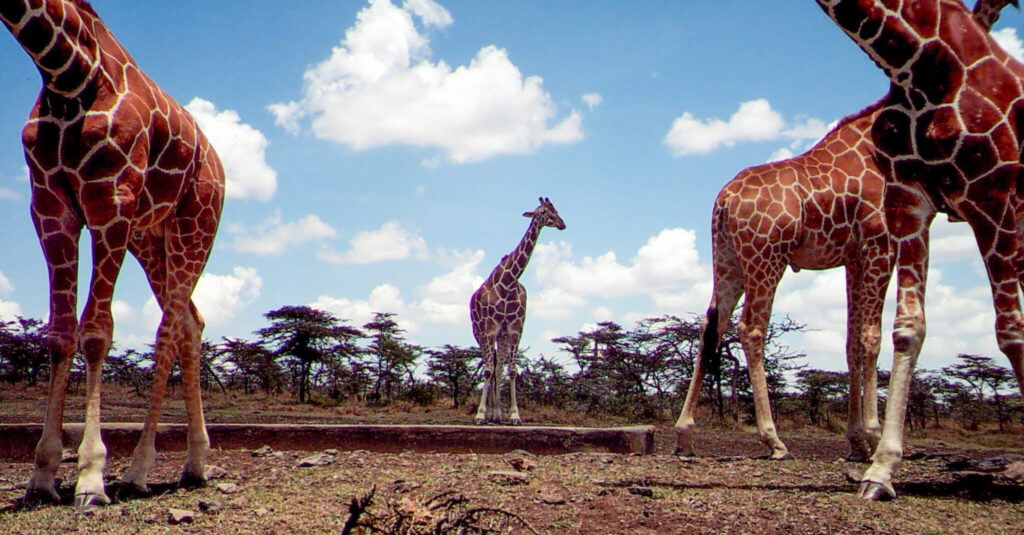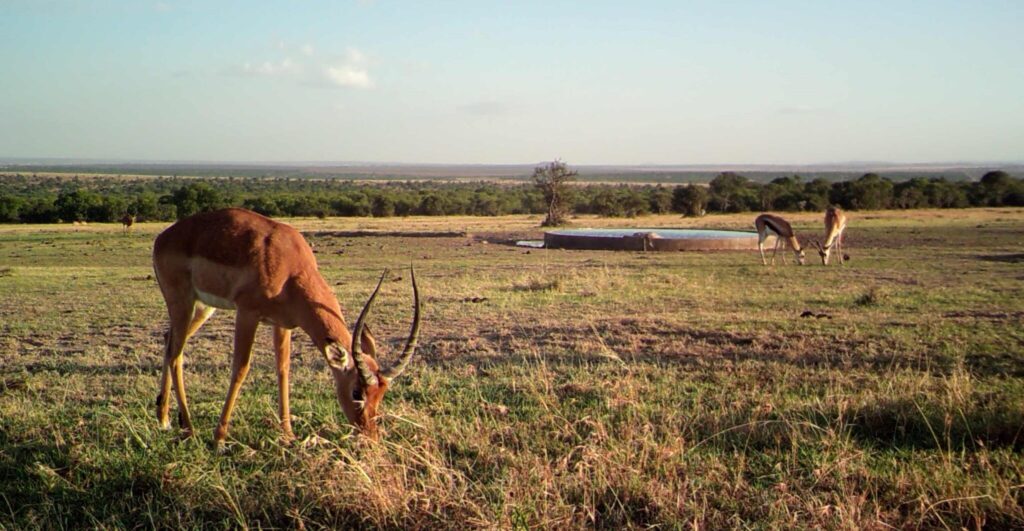
As climate change drives higher temperatures and water scarcity, disease transmission between livestock and wildlife at shared resources is on the rise. Colorado State University research suggests that resource management and parasite treatment can help mitigate parasite transmission between cattle and wild herbivores.
In contrast with dwindling wildlife populations, domestic livestock populations continue to increase globally, and with them come more parasites. A CSU study, based on experiments and observations in Kenya, suggests that in dry landscapes where cattle and wildlife graze and drink at the same limited water sources, parasites from cattle can infect wildlife like giraffes and buffalo. Treating cattle for parasites and managing water sources show promise for limiting the spread of disease between species.
Led by Colorado State University Fish, Wildlife and Conservation Biology Assistant Professor Georgia Titcomb, the research for this study took place from 2017 to 2018 in Ol Pejeta Conservancy, Kenya. Findings were published Dec. 6 in Proceedings of the Royal Society B.
According to the study, in arid climates, water sources and the foraging areas around them are “environmental transmission hotspots” for disease. These hotspots represent a small area where a high number of species congregate, which increases their risk of exposure to pathogens, including viruses, bacteria, ectoparasites and gastrointestinal parasites.
Although they are important to the ecosystem, certain parasites are particularly problematic for both cattle and wildlife because they can cause weight loss, decreased milk production, weakened immune systems and mortality. This can lead to further reduction of wildlife populations in addition to economic loss for cattle farmers.

While the gastrointestinal parasites considered in this study are predominantly found in livestock and wildlife, other pathogens and bacteria can spread between cattle and humans. Despite these concerns, the researchers see advantages to this interspecies relationship.
“Fortunately, we have a lot of control over what we do with cattle, and that in turn can benefit wildlife,” said Titcomb. “We can reduce the impacts of parasites by treating cattle with medicine that destroys parasitic worms.” Additionally, Titcomb suggests that giving cattle their own water source can help combat parasitic spread.
According to this and other studies, over the last six decades, global cattle populations have grown by 60%, and today, they comprise 35% of overall mammal biomass on the planet. In comparison, wildlife numbers have declined and now make up only 4% of mammal biomass. Wildlife and cattle compete over water, which will likely intensify as dry lands become more prevalent due to climate change.
Cattle are not the biggest parasite sharers on an individual basis, but because they are so numerous, the potential for their parasites to infect other species is very high. The study found that the animals that are most susceptible to parasite transmission from cattle include Cape buffalo, reticulated giraffes and impala, while African elephants and plains zebra have a lower risk. Titcomb believes this difference between species’ infection rates can be explained by the animals’ evolutionary history and differing digestive systems.
This research took place in the savanna of East Africa, but Titcomb and her fellow researchers – from Texas A&M University, University of California, Mpala Research Centre and Ol Pejeta Conservancy – are hopeful that their research will be replicated elsewhere.
The parasites found in Kenya are present throughout the world, and dry lands comprise 41% of the Earth’s land, suggesting that interspecies parasite transmission is probable outside of Kenya.
“We want our research to be accessible and replicable, because as we have seen in recent years, the spread of disease is a global problem with huge economic implications, and we would all benefit from understanding more about interspecies disease transmission,” Titcomb said.